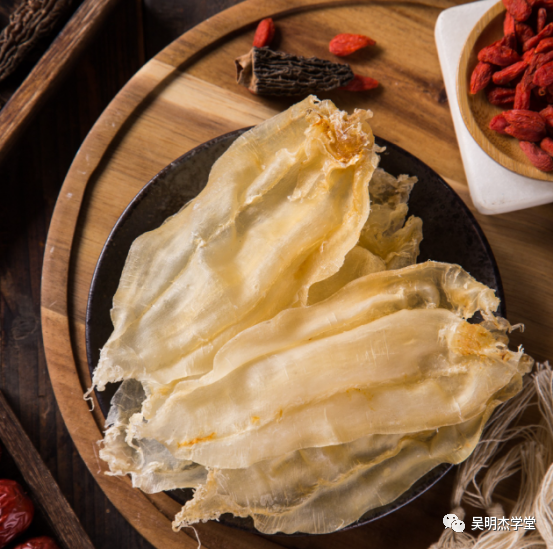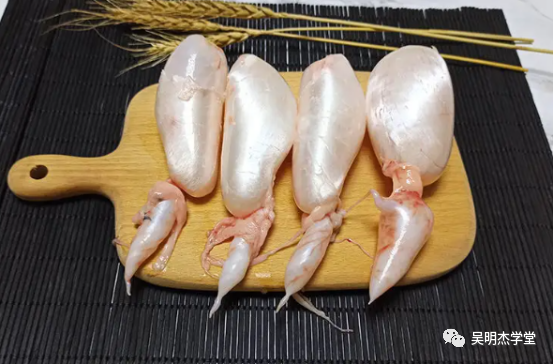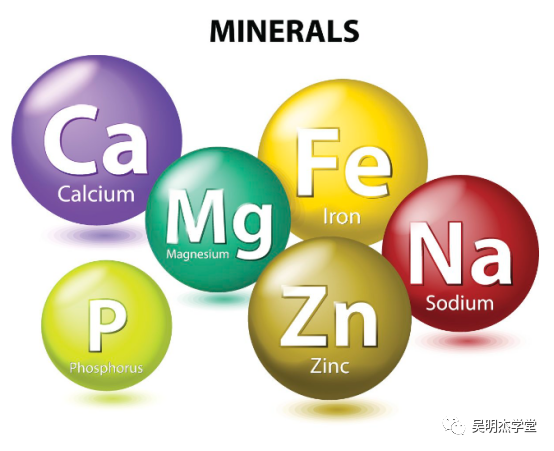Hua Jiao (Fish Maw)
Dried products of various types of fish swim bladders
Fish maw is a traditional ingredient originating from Asia. It is an ancient and precious ingredient and is widely used in Chinese cuisine. It not only has a unique taste and delicious taste, but also has a variety of nutrients and medicinal values.
Also called Yu Jiao, Bai Piao, Hua Jiao, and Yu Piao. Fish maws include yellow croaker maw, catfish maw, eel maw, etc., which are mainly produced in coastal areas of my country and Nanyang Islands. It is the swim bladder of a fish, cut open and dried in the sun. It is one of the four seafood delicacies and has been listed as one of the "Eight Delicacies" in modern times. Fish maw is also a classic ingredient in dishes.
Produced in China’s coastal areas, Guangdong's "Guang Du" is the best. Fujian's "Mao Yu Du" is second to "Guang Du", but it is also a good product. It is relatively simple to identify the quality of fish maw. In addition to understanding the characteristics of various fish maws, generally those with a large and thick body and bright color are top grade; those with small and thin body and dark color are inferior products; those with black color have deteriorated and are inedible.
This article will introduce you to the origin, preparation method, nutritional value and application of fish maw in different fields such as traditional Chinese medicine.
————————————————————————————————————————————————
Hua Jiao’s origin and processing
When making fish maw, it is very important to use fresh fish. Commonly used fish species vary in different regions and cultures, and common ones include cod, eel, abalone, etc. These fish species are generally considered to have a soft texture and high swim bladder content, making them suitable for making high-quality fish maws.
The process of making fish maw basically includes the following steps:
1. Cleaning: Wash the fish maw thoroughly with clean water to remove impurities and dirt on the surface.
2. Steaming: Put the cleaned fish maw into a steamer and steam over appropriate heat until the fish maw is completely cooked. This ensures that the texture of the swim bladder becomes softer and easier for subsequent handling and processing.
3. Drying: The steamed fish maw needs to be dried to remove excess moisture. This step usually needs to be carried out in a well-ventilated environment to ensure that the swim bladder can dry completely.
4. Grinding: The dried fish maw is ground, usually using a stone mill or grinder, until it forms a fine powder.
5. Screening: Screen the ground fish maw powder to remove impurities and uneven particles to ensure the texture of the fish maw is fine and uniform.
Through the above steps, the fish maw is finally processed into a golden-colored, translucent fish maw, ready for cooking and eating.
Since fish maw production requires a large amount of fish maw, in order to protect marine resources and ecological balance, legal and sustainable channels should be chosen to obtain fish maw. This ensures the quality and sustainability of the fish maw, while also being a responsible approach to environmental protection.
————————————————————————————————————————————————
Nutritional value of fish maw
Fish maw enjoys a high reputation in Chinese cuisine, not only because of its delicious taste, but also because of its rich nutritional value. Main nutrients and benefits of fish maw:
1. Collagen:
Fish maw is rich in collagen, a structural protein that is important for maintaining skin elasticity and health. Collagen also helps protect joint and bone health and promotes wound healing and tissue repair.
2. Protein:
Fish maw is a good source of protein and contains a variety of amino acids, important nutrients the body needs to build and maintain healthy tissues.
3. Minerals:
Fish maw is rich in minerals, including calcium, phosphorus, potassium, magnesium and zinc. These minerals are essential for maintaining bone health, nerve conduction, muscle function and blood circulation.
4. Multivitamins:
Fish maw is rich in a variety of vitamins, including vitamin A, vitamin B complex, vitamin C and vitamin E, etc. These vitamins play an important role in the body's normal functions, such as maintaining the immune system, boosting metabolism, and maintaining skin health.
5. Low fat:
Fish maw generally has a lower fat content compared to other animal fats. This makes it a healthier ingredient choice.
In addition to the nutrients mentioned above, fish maw is also believed to nourish the body, nourish the skin, promote digestion and enhance immunity.
It is regarded as a nourishing ingredient in traditional Chinese medicine and is often used to regulate weak constitutions and restore health. However, it should be noted that fish maw is usually rich in salt, so consumption should be controlled in moderation, especially for people with high blood pressure or those who limit sodium intake.
In general, fish maw, as a traditional delicacy, has rich nutritional value and multiple benefits, but its intake in the diet should be moderately controlled based on personal needs and health conditions.
————————————————————————————————————————————————
Application of fish maw in TCM
In the field of traditional Chinese medicine, fish maw is regarded as a nourishing food and is widely used in traditional Chinese medicine theory and practice. Some common applications of fish maw in traditional Chinese medicine:
Historical records indicate that the Chinese people use fish maws for consumption tracing back to before the Han Dynasty.
· The so-called fish maw was recorded in "Qimin Yaoshu" more than 1,600 years ago.
· "Materia Medica Qiuyuan" says: It has the function of "nourishing the muscles and veins, stabilizing hand tremors, and consolidating the essence".
· It is said in "New Compilation of Materia Medica" that it can "replenish blood".
· "Compendium of Materia Medica" records: "Swim bladder combined with Sha Yuan and Ji Li is called Jujing Wan formula, which is an important medicine for consolidating essence."
· "Suixiju Diet Manual": Do not eat abalone swim bladder if the external symptoms are not clear and the phlegm is excessive internally, as it will cause greasiness and stagnation.
· "Compendium of Materia Medica" says: The swim bladder is the white clam of various fishes, and it is hollow like a bubble, so it is called the swim bladder. It can be treated as glue, also known as spin glue.
· The "New Compilation of Materia Medica" also says: The fish maw gel is thick and enters the kidneys to replenish essence. It may be greasy and stagnant. Add ginseng and allow Qi to flow in it, and the essence will be more abundant without the disadvantages of cementation.
1. Nourish the body:
Fish maw is believed to have the effect of nourishing yin blood and replenishing the body. In traditional Chinese medicine theory, insufficient Yin blood is often associated with symptoms such as physical weakness, dry skin, and anemia. Fish maw is rich in collagen and protein, nutrients that are believed to help nourish yin and blood, promoting health and recovery of the body.
2. Beauty and skin tone:
Because fish maw is rich in collagen, it is often considered beneficial to the health and beauty of the skin. Collagen is an important component of skin and keeps it elastic and smooth. Therefore, fish maw is widely used in traditional Chinese beauty therapies to improve skin texture, reduce wrinkles and enhance skin radiance.
3. Nourishes the digestive system:
Fish maw is believed to help nourish and tone the digestive system. In traditional Chinese medicine theory, fish maw is regarded as a warming and tonic food that can help relieve symptoms such as indigestion and stomach cold. It is used in nourishing soups and stews to improve digestion and increase appetite.
4. Diuresis and detoxification:
Fish maw is believed to have diuretic and detoxifying properties. In the theory of traditional Chinese medicine, fish maw is regarded as a food that nourishes yin and moisturizes dryness. It can help eliminate dampness, heat and toxins from the body and promote urine excretion. Therefore, it is often used in traditional Chinese medicine detoxification therapy to help clear away heat, detoxify and improve damp-heat symptoms.
The above is based on the views of traditional Chinese medicine theory and practice. When using fish maw or other Chinese herbal medicines, it is recommended to consult a professional Chinese medicine practitioner or medical professional for guidance to understand the usage and dosage suitable for individual conditions.
————————————————————————————————————————————————
The history of fish maw in Chinese cuisine
The history of fish maw as a Chinese delicacy can be traced back hundreds of years, and it plays an important role in China's food culture. Below, let’s explore the historical story of Fish Maw together.
According to research by archaeologists, fish maw first appeared in southern China, especially in Guangdong and Fujian provinces. The rich marine resources in these two areas provide a rich supply of fish, laying the foundation for the production of fish maw.
In ancient times, the production process of fish maw was relatively simple, which mainly involved drying the fish maw and then grinding it. However, as time went by, people gradually discovered more sophisticated and unique preparation methods to make fish maw even more delicious. The skill of making fish maw has gradually been passed down and developed into a unique production process.
In the past, fish maw was regarded as a rare ingredient, mainly because the preparation process was cumbersome and required a large amount of fish maw. Therefore, fish maw became a delicacy for the aristocracy and wealthy class. It often appears at banquets and important occasions, symbolizing wealth and prosperity.
With the passage of time, fish maw gradually entered the dining tables of ordinary people and became a part of Chinese cuisine. Today, fish maw has become an integral part of Cantonese and Fujian cuisine. Not only is it widely used in local dishes, it has also become a popular ingredient in Chinese restaurants and seafood markets.
However, as fish maw's popularity and demand increase, overfishing and illegal trade have also brought problems. In order to protect marine ecosystems and fish stocks, governments and environmental organizations have begun taking measures to encourage people to choose legal and sustainable sources of fish maw.
Fish maw is not just an ingredient, it has a rich history and culture behind it. It has witnessed the development and evolution of Chinese food culture and is also the embodiment of people's pursuit of delicious food. Whether tasting the deliciousness of fish maw or learning about its historical stories, we value and appreciate the unique charm of this Chinese delicacy even more.
Fish maw is widely used in Chinese cuisine, especially in the cuisines of Guangdong and Fujian, where it is regarded as a precious ingredient and is often used in high-end dishes and banquets. Here are a few common uses of fish maw in Chinese cuisine:
1. Fish maw stew:
Fish maw is often used to make nourishing soups, such as fish maw stewed pigeon soup, fish maw stewed fresh fish soup, etc. These soups usually use fish maw as the main ingredient, and are combined with other ingredients such as pigeon, fresh fish, scallops, etc. to create a rich soup that is delicious and nutritious.
2. Stir-fried fish maw:
Fish maw is also often used in stir-fry dishes, such as stir-fried fish maw with seasonal vegetables, stir-fried fish maw with fresh shrimps, etc. Stir-frying fish maw with vegetables or seafood can enrich the taste of the dish, bringing a delicious taste and silky texture.
3. Steamed fish maw:
Fish maw steamed vegetables is a common cooking method, such as fish maw steamed fish, fish maw steamed tofu, etc. Steaming fish maw with fish, tofu and other ingredients allows the fresh flavor of fish maw to be integrated into the ingredients, enhancing the texture and taste of the dishes.
4. Stew and sugar water:
Fish maw is also used to make stews and syrups, such as fish maw, bird's nest syrup, fish maw, red date syrup, etc. Combining fish maw with other nourishing ingredients and stewing it makes the soup or sugar water have the effect of beautifying and nourishing the body.
5. Fish maw rice and fish maw noodles:
In some local cuisines, fish maw is often used with rice or noodles to make fish maw rice or noodles. This method allows the rice or noodles to absorb the aroma and texture of the fish maw, adding a unique flavor.
These are just some of the common uses of fish maw in Chinese cuisine. In fact, fish maw is very versatile and can be innovated and varied according to the needs of the dish. It not only adds rich texture and flavor to dishes, but also showcases the essence and creativity of Chinese cooking.
————————————————————————————————————————————————
The price difference of fish maw in the market
The price of fish maw in the Chinese market varies depending on factors such as region, quality, supply, and market fluctuations.
The price ranges of some common fish maw varieties in the Chinese market are for reference:
Scallop maw: Scallop fish maw is a high-grade fish maw variety with a high market price. Usually ranging from several thousand to tens of thousands of yuan per kilogram, the specific price depends on the quality, origin and supply of scallops.
Shark fin fish maw: Shark fin fish maw is a traditional fish maw variety that is also highly valued in the Chinese market. The market price is relatively high, usually ranging from thousands to tens of thousands of yuan per kilogram, depending on the quality, origin and supply of shark fins.
Plant fish maw: In the Chinese market, some plant collagen fish maw substitutes have also begun to attract attention in recent years. The price of plant fish maw is relatively low, usually ranging from hundreds to thousands of yuan per kilogram. The specific price depends on the source and quality of the plant collagen.
The above prices are for reference only. The actual market price will be affected by factors such as market supply and demand, quality recognition, and brand influence. When purchasing fish maw, it is recommended to consult with a reliable supplier or market and make a choice based on personal needs and budget.
————————————————————————————————————————————————
Fish Maw’s cultural and environmental significance
Fish maw is not only valuable in nutritional and gastronomic terms, but also has cultural and environmental significance:
Ⅰ. Cultural significance:
1. Cultural inheritance:
Fish maw has a long history and tradition in Chinese culture. It is one of the representatives of Chinese cuisine and is regarded as a precious ingredient. The techniques of making and cooking fish maw are passed down from generation to generation, reflecting the richness and tradition of Chinese culinary culture.
2. Banquet and festival:
Fish maw is often used in high-end banquets and festivals and is regarded as a noble ingredient. In wedding ceremonies, celebrations, important festivals and other occasions, fish maw dishes are often regarded as important reception dishes, which reflects the Chinese banquet culture's preciousness of ingredients and respect for guests.
3. Cultural Etiquette:
In Chinese culture, fish maw is also regarded as a great gift. Giving fish maw as a gift to others not only reflects respect and care for the other person, but also symbolizes wealth and blessings.
Ⅱ. Environmental significance:
Ecological protection:
One of the main raw materials of fish maw is shark fin, and obtaining shark fin usually requires fishing sharks. Shark populations have declined due to shark fishing, which has had a negative impact on marine ecosystems. Therefore, from an environmental protection perspective, some people advocate reducing or avoiding the consumption of fish maw to protect sharks and marine ecology.
Sustainable development:
In order to solve environmental problems, some areas have begun to promote the use of substitutes for making fish maw, such as plant collagen or gums from other marine plants. The use of these alternatives can reduce dependence on sharks and promote sustainable development.
Overall, fish maw culturally represents the tradition and nobility of Chinese cuisine, while environmentally it raises concerns about marine ecological protection and sustainable development. While enjoying fish maw delicacies, we should also think about how to rationally utilize resources and explore sustainable alternatives while protecting the environment.
—The end—
Disclaimer:
This is a translation of an original article, please note the source when sharing it. All are welcome to share~
If there is any copyright infringement in the article, please contact us to delete it, thank you!
















